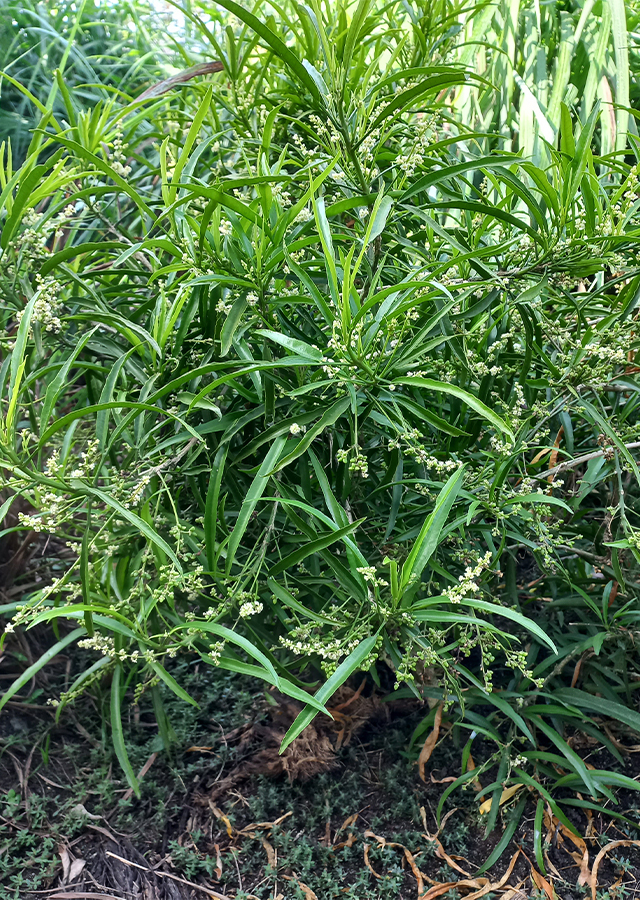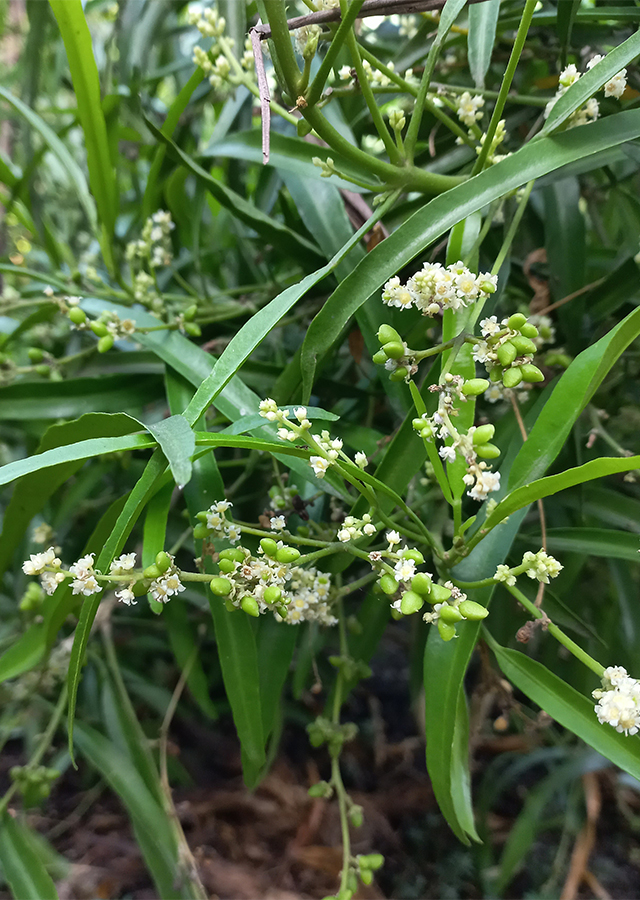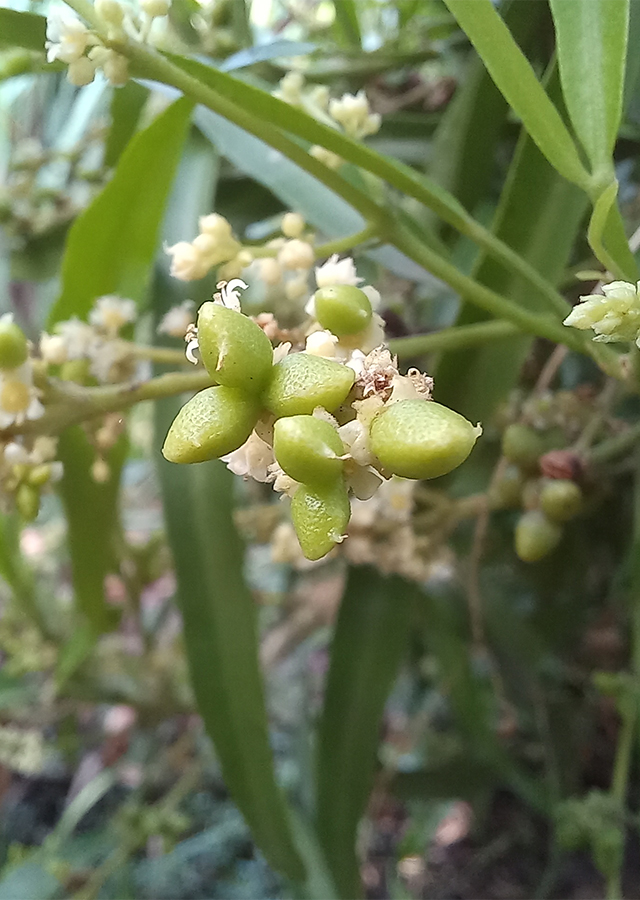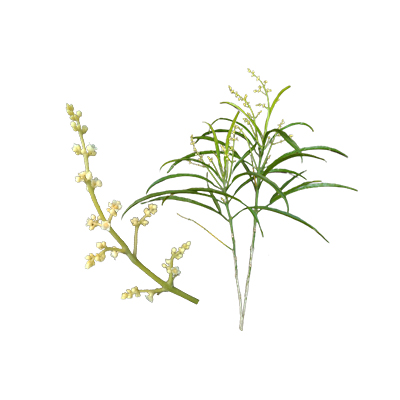Zodia
Euodia hortensis J.R.Forst. & G.Forst.
Rutaceae
Location in our garden
Principal



Synonym
Euodia suaveolens Scheff.
Ampacus hortensis (J.R.Forst. & G.Forst.) Kuntze
Fagara euodia L.f.
Habitus
Shrubs. An evergreen perennial shrub or small tree, growing up to 4 m tall.
Part Used
Leaves
Bark
Flowers
Roots
Stem
Growing Requirements
Full Sunshine
Need Shade
Habitat
Forest
Terrestrial
Overview
Euodia hortensis is native to South-East Asia. The plant is harvested from the wild for local use as a medicine and perfume. It is commonly planted in home gardens and around villages as an ornamental or ceremonial plant and boundary marker; it is also often planted in cemeteries or burial grounds. In Indonesia (especially in Papua), the leaves are used as repellent and as tonic for stamina. The leaves and flowers are fragrant and used in garlands, worn behind the ear, and used to scent coconut oil. The leaves are sometimes used for scouring.
Vernacular Names
No found data on this. Need further research.
Agroecology
Zodia is an understorey shrub, and can be found in thickets, lowland forest, fallow forest, and tree groves; at elevations up to 600 m. It prefers semi-shade to full sun, with moderate water. Grows in moist soils and well-drained soils.
Morphology
- Root - taproot system.
- Stem - small and woody.
- Leaves - simple, petiolate, lanceolate, wavy margin (undulate), pinnate venation, smooth, glossy, fragrant, mature foliage can be green, yellow and golden in colour.
- Flower - bisexual, cream, off-white to white,4 petals, obovate, infloresecence cluster, fragrant.
- Fruit - simple fruit, obovate, smooth, green when young and turns brown when mature, containing 4 seeds.
- Seed - obovate, small shiny black.
Cultivation
Generative propagation is by seed, and vegetatively propagated by stem cutting.
Chemical Constituents
Essential oils (evodiamine, rutaecarpine, linalool, a-pinene, caryophyllene, alpha-copaene, arcucumene), menthofuran, evodone, hortensol, berberine, furoquinoline, acridone alkaloids.
Traditional Medicinal Uses
- The leaves are antiinflammatory, emmenagogue, febrifuge and laxative.
- They are chewed as a remedy for toothache or stomach pains.
- Leaves infusion is used to reduce fever.
- The crushed leaves are used to prepare a remedial bath. Liquid from the leaves is used as a remedy for swollen testicles. The leaves are crushed, mixed with oil and applied to sore gums. The leaves are also used to cure headache and earache, and are heated then rubbed onto bruises.
- The bark is part of an internal remedy that is used to relieve thrushlike conditions, to retard menstruation, and to relieve pain in childbirth. Fluid from the bark is used to treat a disease whose symptoms are yellow eyes and yellow urine. The bark may be chewed with betel nuts and rubbed onto aching body parts.
- Liquid from the stem is used in treating children with convulsions.
Part Used
Reference Sources
- Fern, Ken. (2021). Evodia hortensis J.R.Forst. & G.Forst. https://tropical.theferns.info/viewtropical.php?id=Evodia+hortensis. 13-03-2022.
- Kew Royal Botanic Gardens. (No date). Plants of the World Online: Euodia hortensis J.R.Forst. & G.Forst. https://powo.science.kew.org/taxon/urn:lsid:ipni.org:names:772897-1. 13-03-2022.
- National Parks of Singapore. (2022). Flora & Fauna Web: Euodia suaveolens Scheff. https://www.nparks.gov.sg/florafaunaweb/flora/1/9/1999. 13-03-2022..
- Top Tropicals. (2022). Euodia hortensis, Melicope hortensis. https://toptropicals.com/catalog/uid/Euodia_hortensis.htm. 13-03-2022.



